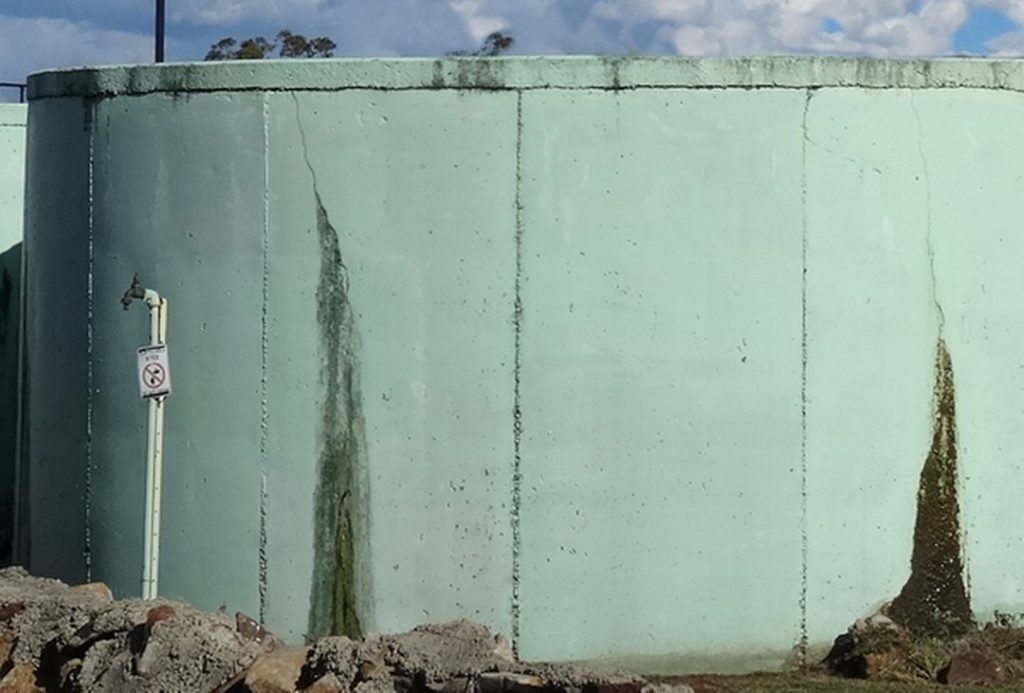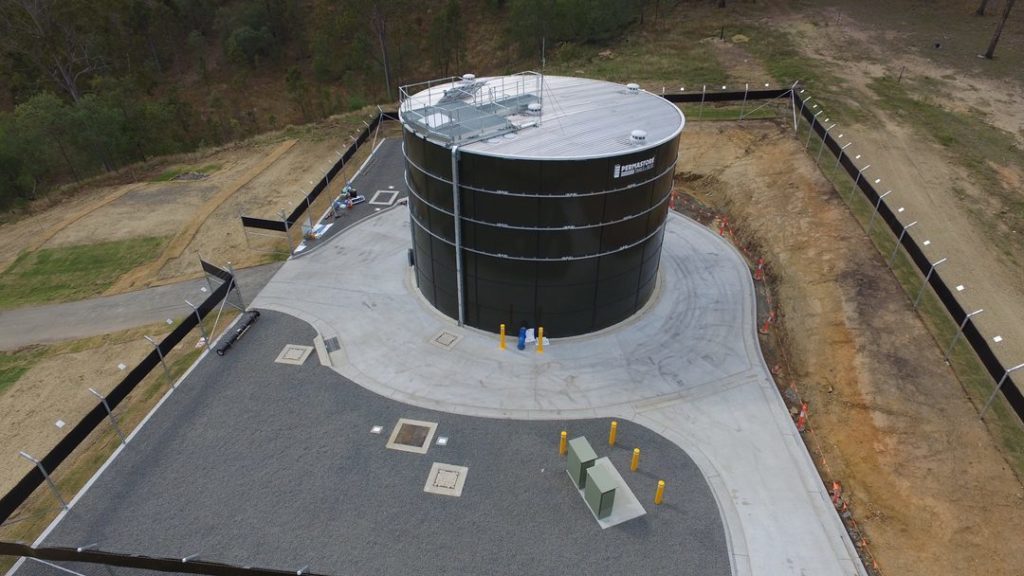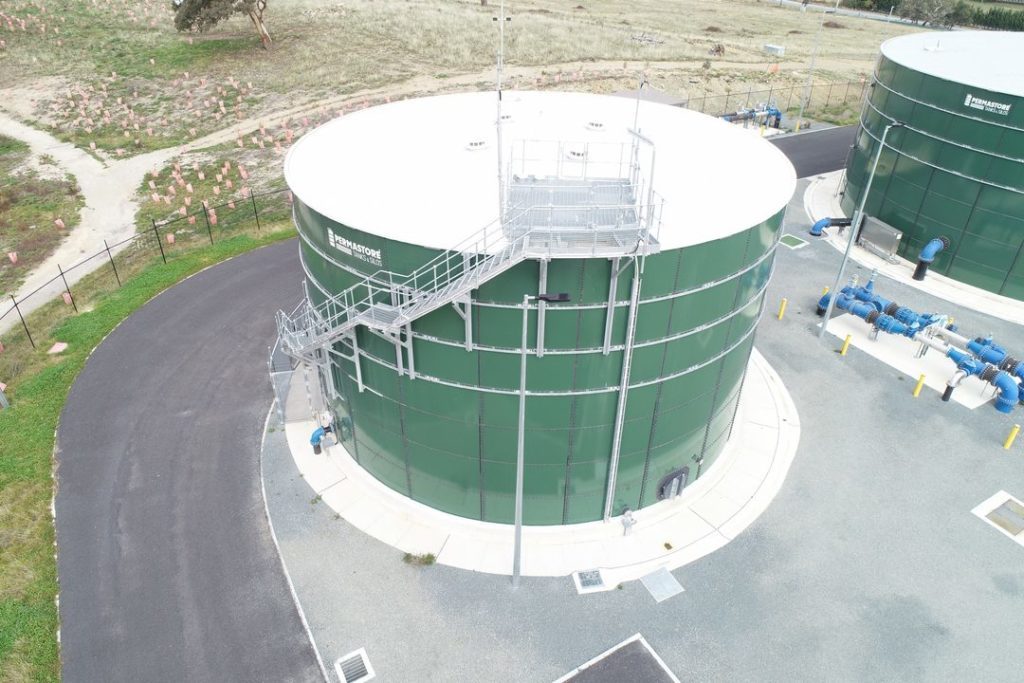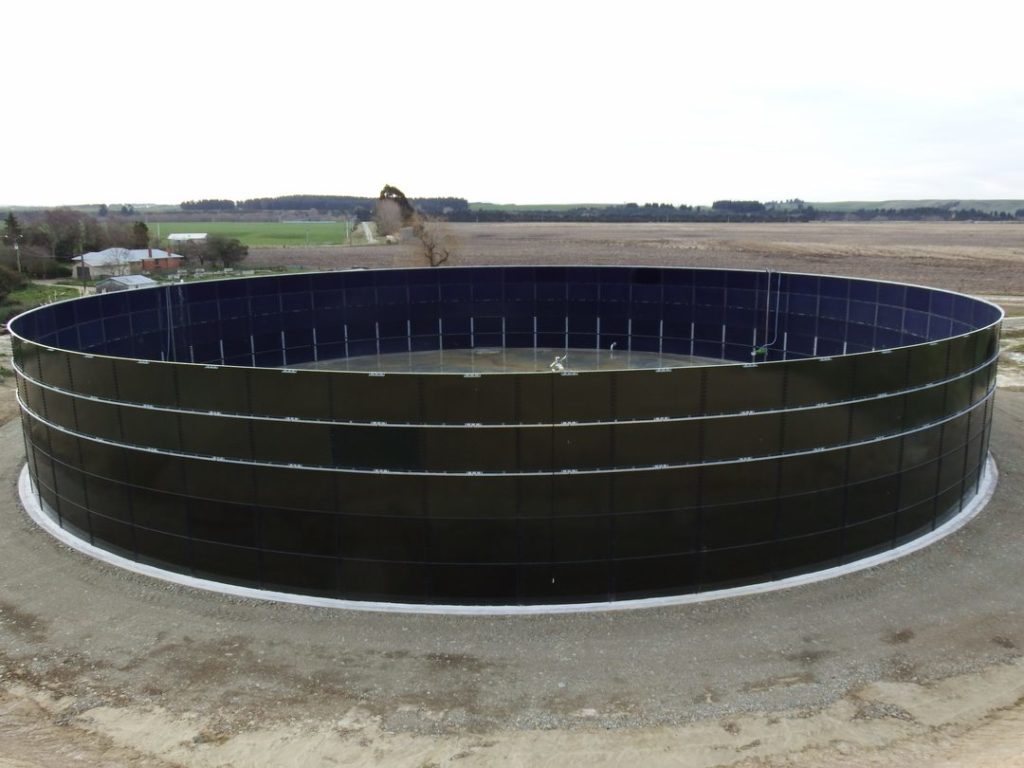When considering the type of material to construct your above ground storage tank with, it is important to consider the various factors that will impact your decision.
Durability and Longevity of Concrete vs. Steel
One main complaint of concrete tanks is cracking, leaking, and the resulting maintenance and costs required to correct these problems.
Concrete is not flexible, and is subject to expansion and contraction – caused by changing temperatures or seismic activity – which overtime causes cracks and leaking. Cracks in concrete tanks can be repaired, but in some instances an expensive plastic liner is required. An untreated crack in concrete can lead to the growth of bacteria on the porous concrete which can compromise the sanitation of your tank.
The most significant advantage for choosing a steel tank over a concrete tank is the durability. Steel will flex but not crack like concrete tanks often will. A properly maintained above ground steel panel tank can last well over 100 years, whereas a concrete tank is estimated to have a maximum lifespan of 50 years.

Cost of Concrete Tanks
Historically, concrete tanks have been an inexpensive alternative to steel tanks with lower initial investment cost. However, it is critical to think beyond the initial investment cost and consider the cost over the life cycle of the tank.
Then, there is the cost of the water that is lost, since concrete tanks are allowed and expected to leak. Treated, sanitised water is expensive and can adversely affect the surroundings of the tank through erosion and the killing of micro-organisms in the environment.
The associated maintenance expenses, as well as the potential loss in revenue and usage from having your tank out of service, will add up. Since steel tanks have a longer life cycle, the overall cost spread across the life of the tank makes a steel tank the most attractive option, and is typically less expensive when compared to a concrete tank.
Flexibility and Customisation
Steel tanks are custom designed to meet your specific needs. This allows you the ability to choose the exact dimension, style of roof and floor, and ability to add inlets, outlets, manways, roof hatches, and vents. If your needs for the tank change, it is easy to adapt and change components of the tank.
Making these adjustments in a concrete tank is difficult and very costly. A poured in place concrete tank is impossible to move. On the contrary, due to the flexibility of a steel tank, relocating the tank can be easily performed.

Safety and Environmental Impact
Safety is the most important factor to consider with your tank. If your industry requires you to have confidence in the sanitation level of the liquid in your tank, then steel is the way to go.
Due to the porous conditions of concrete and its inevitable cracking, there is the potential for mould and bacterial growth, and the leaching of calcium found in the concrete.

Build the Right Tank
Reliant Solutions strongly believes in building steel tanks. Deciding to build your tank out of steel will be a decision you will not regret. Reliant Solutions offers a range of bolted steel panel tanks from our Glass Fused to Steel coatings to our Fusion Bonded epoxy coatings.
Reliant Solutions recently replaced an ageing concrete tank with a new Glass Fused to Steel bolted panel tank. Read more – https://reliant-solutions.co.nz/projects/mount-isa/



